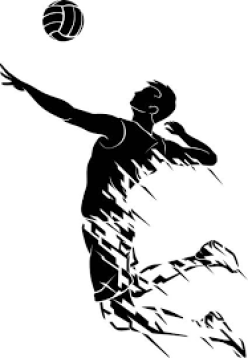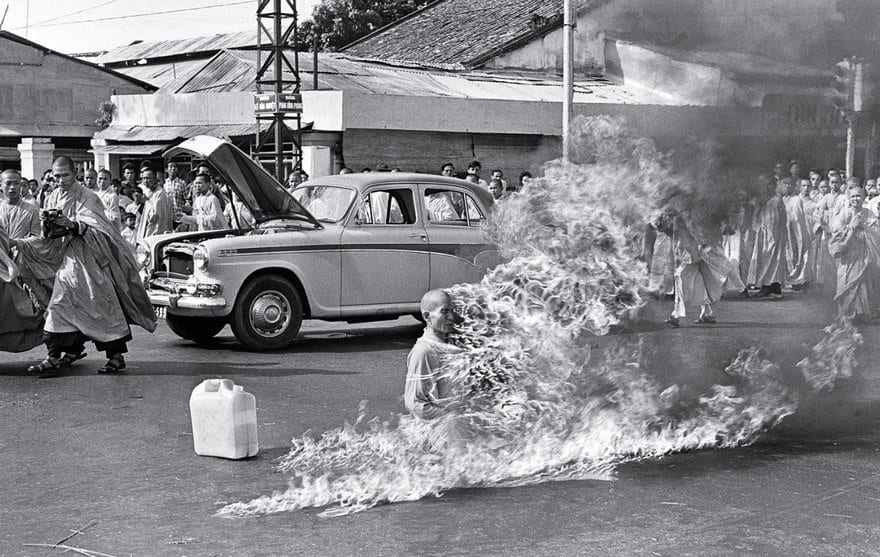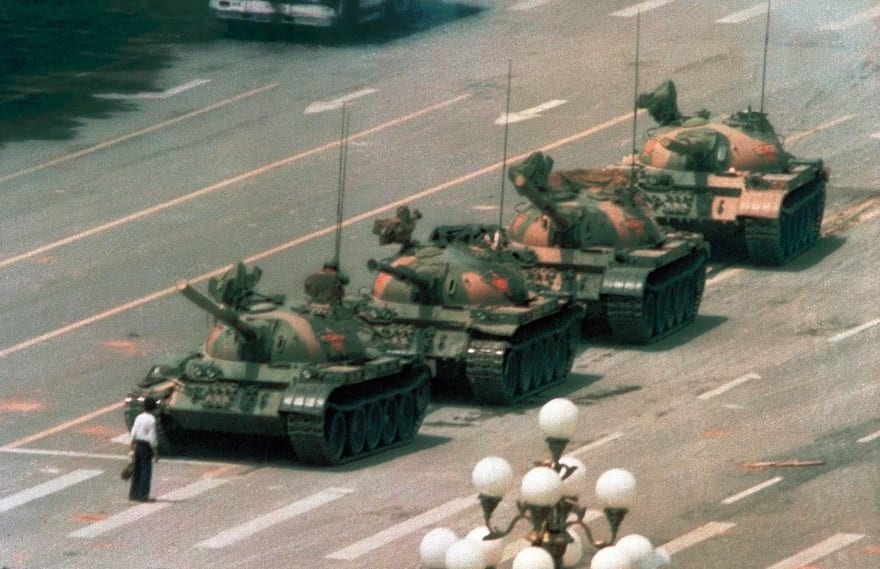In June 1963, most Americans couldn’t find Vietnam on a map. But there was no forgetting that war-torn Southeast Asian nation after Associated Press photographer Malcolm Browne captured the image of Thich Quang Duc immolating himself on a Saigon street. Browne had been given a heads-up that something was going to happen to protest the treatment of Buddhists by the regime of President Ngo Dinh Diem. Once there he watched as two monks doused the seated elderly man with gasoline. “I realized at that moment exactly what was happening, and began to take pictures a few seconds apart,” he wrote soon after. His Pulitzer Prize–winning photo of the seemingly serene monk sitting lotus style as he is enveloped in flames became the first iconic image to emerge from a quagmire that would soon pull in America. Quang Duc’s act of martyrdom became a sign of the volatility of his nation, and President Kennedy later commented, “No news picture in history has generated so much emotion around the world as that one.” Browne’s photo forced people to question the U.S.’s association with Diem’s government, and soon resulted in the Administration’s decision not to interfere with a coup that November.
It’s the most perilous yet playful lunch break ever captured: 11 men casually eating, chatting and sneaking a smoke as if they weren’t 840 feet above Manhattan with nothing but a thin beam keeping them aloft. That comfort is real; the men are among the construction workers who helped build Rockefeller Center. But the picture, taken on the 69th floor of the flagship RCA Building (now the GE Building), was staged as part of a promotional campaign for the massive skyscraper complex. While the photographer and the identities of most of the subjects remain a mystery—the photographers Charles C. Ebbets, Thomas Kelley and William Leftwich were all present that day, and it’s not known which one took it—there isn’t an ironworker in New York City who doesn’t see the picture as a badge of their bold tribe. In that way they are not alone. By thumbing its nose at both danger and the Depression, Lunch Atop a Skyscraper came to symbolize American resilience and ambition at a time when both were desperately needed. It has since become an iconic emblem of the city in which it was taken, affirming the romantic belief that New York is a place unafraid to tackle projects that would cow less brazen cities. And like all symbols in a city built on hustle,
On the morning of June 5, 1989, photographer Jeff Widener was perched on a sixth-floor balcony of the Beijing Hotel. It was a day after the Tiananmen Square massacre, when Chinese troops attacked pro-democracy demonstrators camped on the plaza, and the Associated Press sent Widener to document the aftermath. As he photographed bloody victims, passersby on bicycles and the occasional scorched bus, a column of tanks began rolling out of the plaza. Widener lined up his lens just as a man carrying shopping bags stepped in front of the war machines, waving his arms and refusing to move.
The tanks tried to go around the man, but he stepped back into their path, climbing atop one briefly. Widener assumed the man would be killed, but the tanks held their fire. Eventually the man was whisked away, but not before Widener immortalized his singular act of resistance. Others also captured the scene, but Widener’s image was transmitted over the AP wire and appeared on front pages all over the world. Decades after Tank Man became a global hero, he remains unidentified. The anonymity makes the photograph all the more universal, a symbol of resistance to unjust regimes everywhere.



